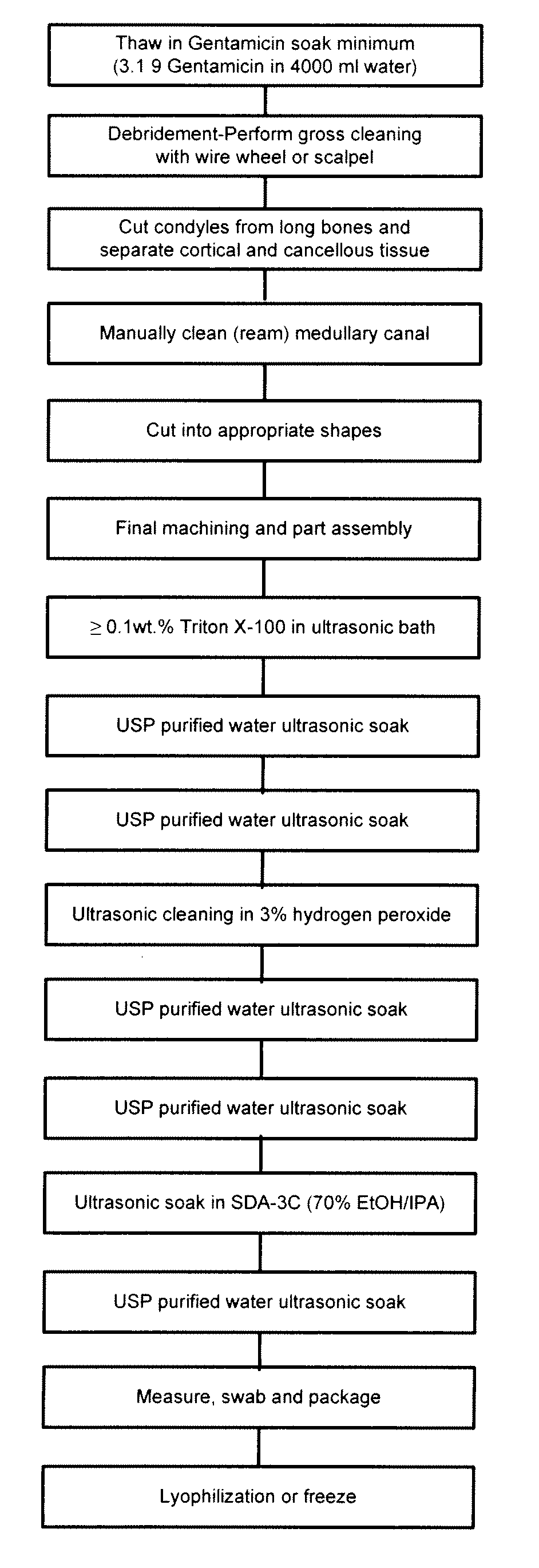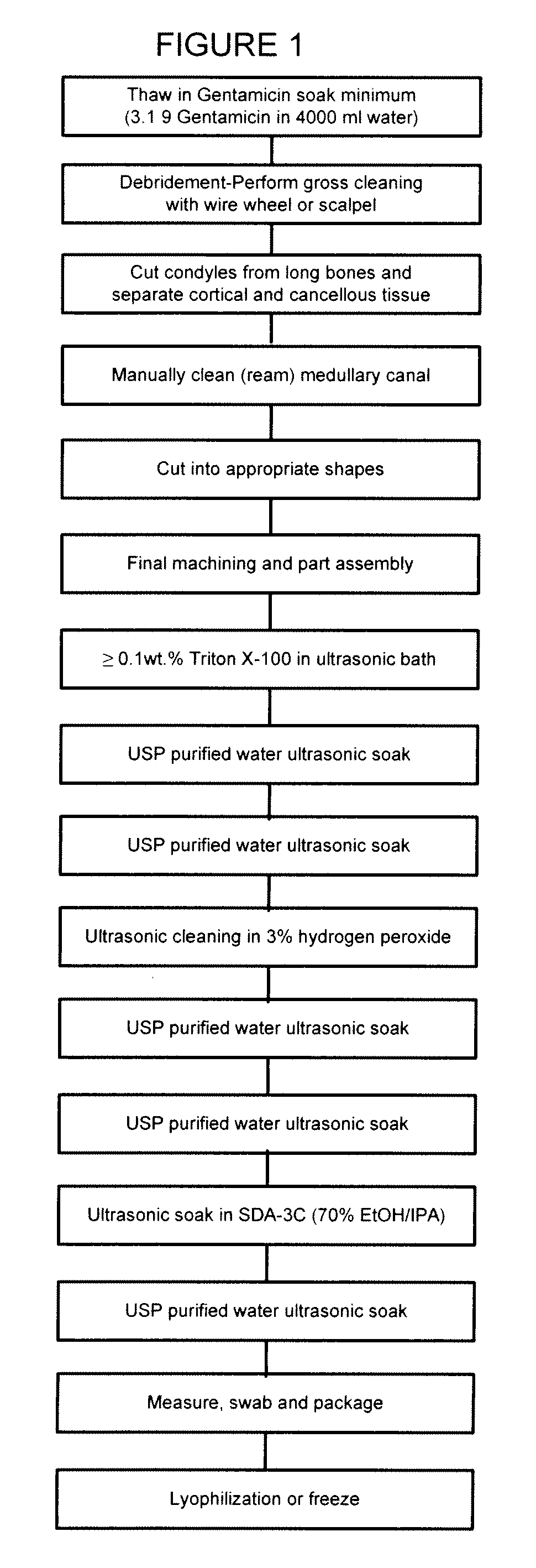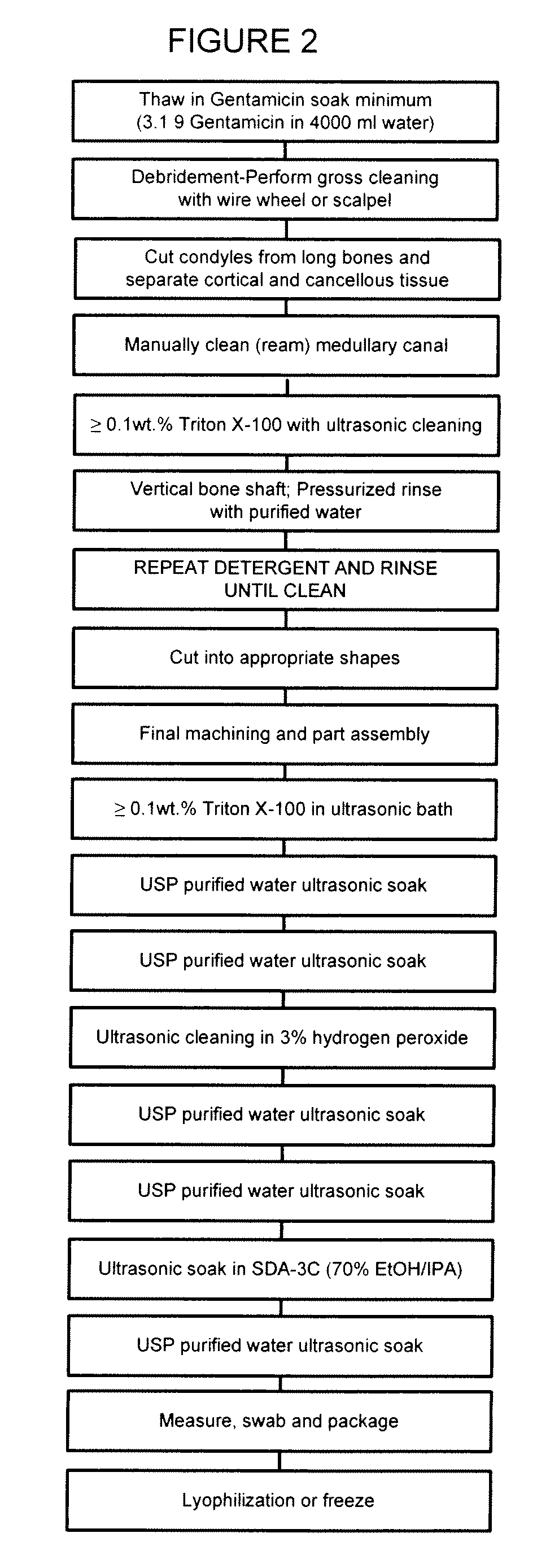Allograft tissue purification process for cleaning bone
- Summary
- Abstract
- Description
- Claims
- Application Information
AI Technical Summary
Benefits of technology
Problems solved by technology
Method used
Image
Examples
Embodiment Construction
[0032]I. Definitions.
[0033]The below definitions serve to provide a clear and consistent understand of the specifications and claims, including the scope to be given such terms.
[0034]Bone Graft. The term “Bone Graft” is intended any bone obtained from a cadaver donor, for example any shaped bone part and / or any small cut pieces of bone.
[0035]Cleaning Container. By the term “cleaning container” is intended for the purpose of the present invention any container of a size sufficient to contain the bone graft being processed. The cleaning container used was a 4 liter stainless steel container with wire mesh to support the bone graft.
[0036]Detergent. By the term “detergent” is intended any agent which through a surface action that depends on it possessing both hydrophilic and hydrophobic properties and / or exerts oil-dissolving (cleansing) and / or antibacterial and / or antiviral effects.
[0037]Ultrasonic Cleaner. The term “ultrasonic cleaner” is intended any ultrasonic cleaning device capabl...
PUM
 Login to View More
Login to View More Abstract
Description
Claims
Application Information
 Login to View More
Login to View More - R&D
- Intellectual Property
- Life Sciences
- Materials
- Tech Scout
- Unparalleled Data Quality
- Higher Quality Content
- 60% Fewer Hallucinations
Browse by: Latest US Patents, China's latest patents, Technical Efficacy Thesaurus, Application Domain, Technology Topic, Popular Technical Reports.
© 2025 PatSnap. All rights reserved.Legal|Privacy policy|Modern Slavery Act Transparency Statement|Sitemap|About US| Contact US: help@patsnap.com



